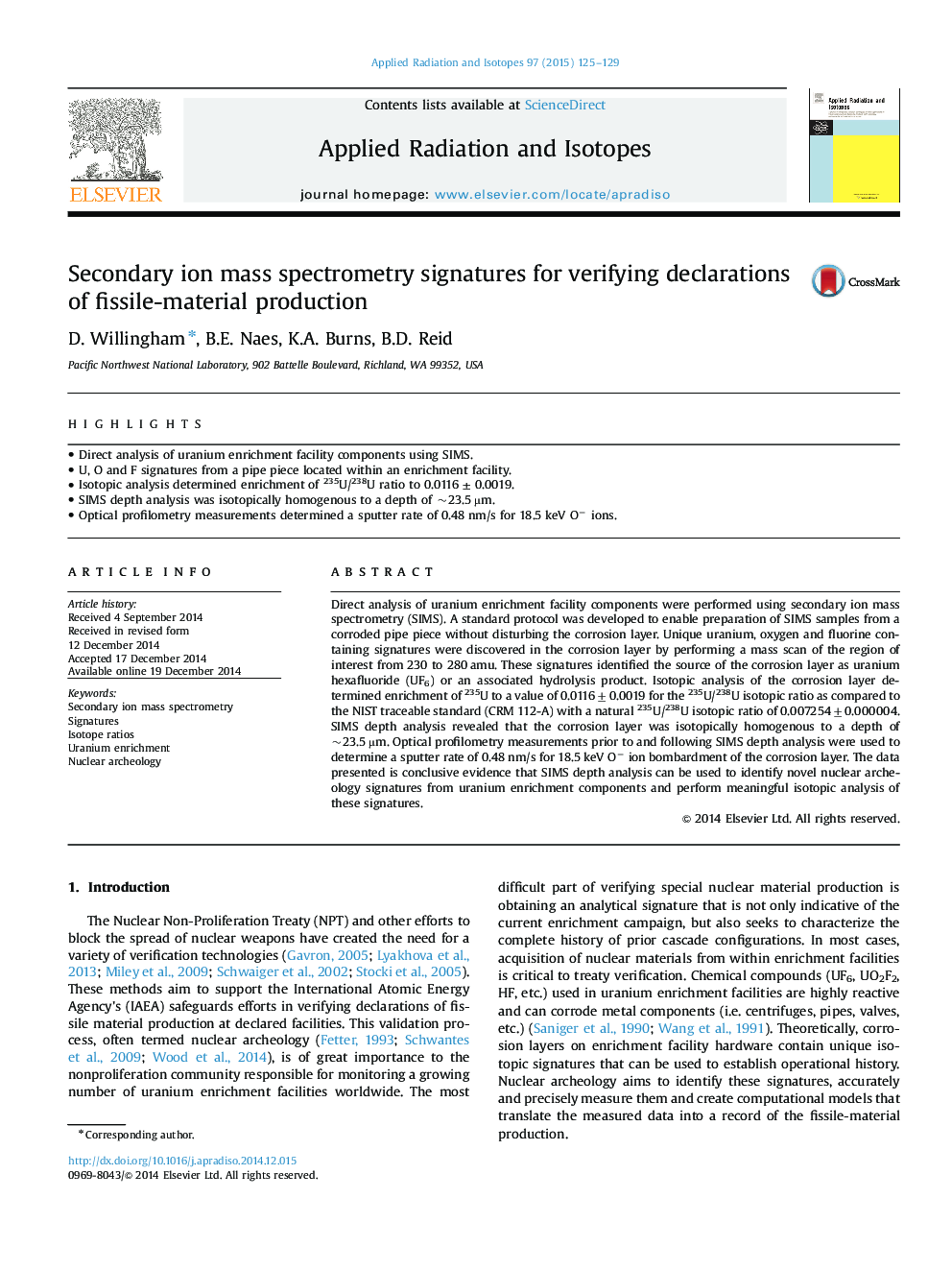| Article ID | Journal | Published Year | Pages | File Type |
|---|---|---|---|---|
| 8209734 | Applied Radiation and Isotopes | 2015 | 5 Pages |
Abstract
Direct analysis of uranium enrichment facility components were performed using secondary ion mass spectrometry (SIMS). A standard protocol was developed to enable preparation of SIMS samples from a corroded pipe piece without disturbing the corrosion layer. Unique uranium, oxygen and fluorine containing signatures were discovered in the corrosion layer by performing a mass scan of the region of interest from 230 to 280 amu. These signatures identified the source of the corrosion layer as uranium hexafluoride (UF6) or an associated hydrolysis product. Isotopic analysis of the corrosion layer determined enrichment of 235U to a value of 0.0116±0.0019 for the 235U/238U isotopic ratio as compared to the NIST traceable standard (CRM 112-A) with a natural 235U/238U isotopic ratio of 0.007254±0.000004. SIMS depth analysis revealed that the corrosion layer was isotopically homogenous to a depth of ~23.5 µm. Optical profilometry measurements prior to and following SIMS depth analysis were used to determine a sputter rate of 0.48 nm/s for 18.5 keV Oâ ion bombardment of the corrosion layer. The data presented is conclusive evidence that SIMS depth analysis can be used to identify novel nuclear archeology signatures from uranium enrichment components and perform meaningful isotopic analysis of these signatures.
Related Topics
Physical Sciences and Engineering
Physics and Astronomy
Radiation
Authors
D. Willingham, B.E. Naes, K.A. Burns, B.D. Reid,
